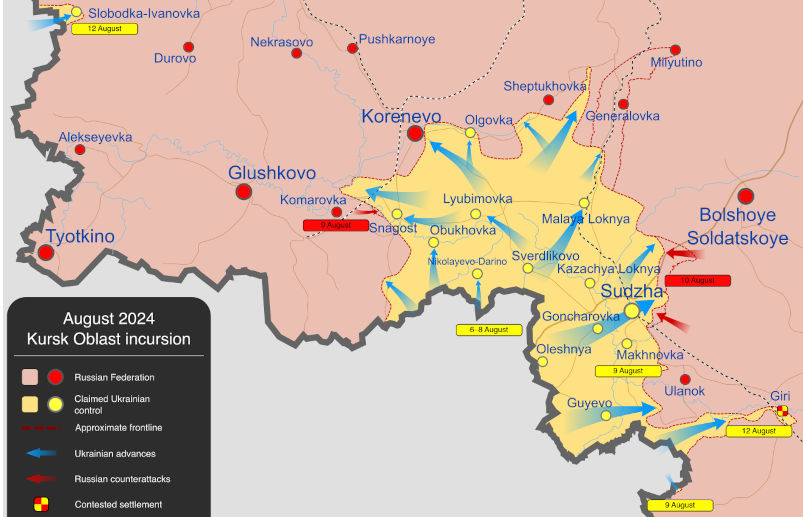Ukraine’s invasion (of Kursk) was a major strategic blunder, which will accelerate its defeat.
The key determinant of success in a war of attrition is the casualty-exchange ratio, not capturing territory, which Western commentators obsess over. The casualty-exchange ratio in the Kursk offensive decisively favours Russia for two reasons. First, it has caused relatively few Russian casualties because Ukraine’s army effectively overran undefended territory. Second, once alerted to the attack, Moscow quickly brought massive airpower to bear against the advancing Ukrainian troops, who were in the open and easy to strike. Unsurprisingly, the attacking forces lost many soldiers and a huge proportion of their equipment.
To make matters worse, Kyiv removed top-notch combat units from the front lines in eastern Ukraine — where they are desperately needed — and made them part of the Kursk strike force. This move is tilting the already lopsided casualty-exchange ratio on that critically important front further in Russia’s favour. It is no wonder — given what a foolish idea the Kursk incursion is — that the Russians were caught by surprise.
This piece is an extract from a symposium by Responsible Statecraft dealing with the question: “What does Ukraine’s incursion into Russia really mean?:
Republished from John’s Substack, August 15, 2024
John J. Mearsheimer
John J. Mearsheimer is the R. Wendell Harrison Distinguished Service Professor of Political Science at the University of Chicago, where he has taught since 1982.
He graduated from West Point in 1970 and then served five years as an officer in the U.S. Air Force. He then started graduate school in political science at Cornell University in 1975. He received his Ph.D. in 1980.
He spent the 1979-1980 academic year as a research fellow at the Brookings Institution, and was a post-doctoral fellow at Harvard University’s Center for International Affairs from 1980 to 1982. During the 1998-1999 academic year, he was the Whitney H. Shepardson Fellow at the Council on Foreign Relations in New York.
